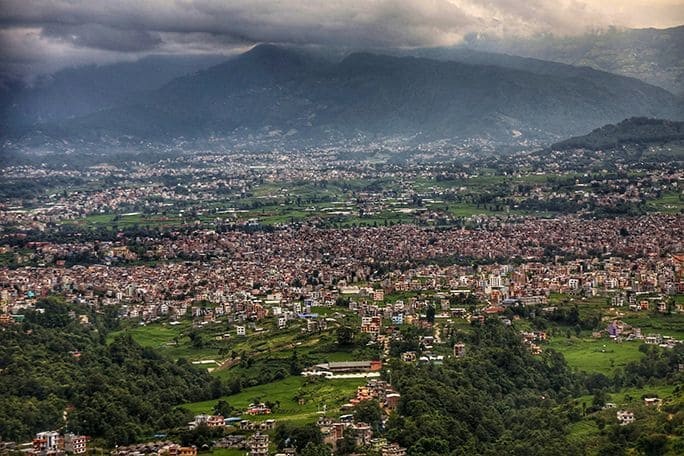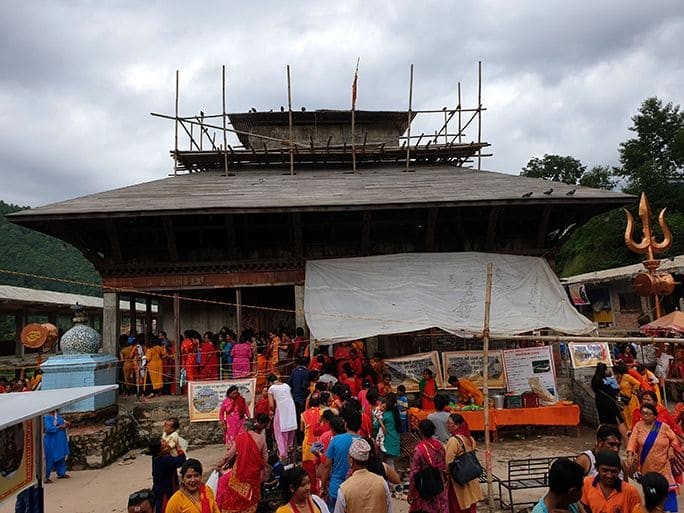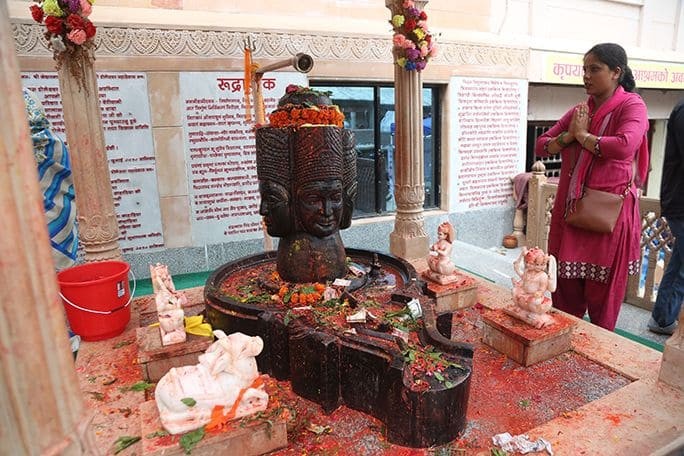-
Places to go
-
Things to do
-
Adventure
Nature
Culture
Wellness
Others
-
-
Festivals & Events
-
Festivals
Event Calendar
-
-
Plan Your Trip
-
Trip Ideas
Travel Details
Book Your Trip
-
- Travel Updates
Pilgrimage to Doleshwar Mahadev Temple
Pilgrimage to Doleshwar Mahadev Temple
Pilgrimage to Doleshwar Mahadev Temple
Visit the special fairs at Doleswhar Mahadev Temple during the month of Shrawan, and Maha Shivaratri and Teej festivals
Shrawan is a holy month that falls in monsoon season (July-August), where the shrines of supreme God Lord Shiva hold the special significance among devotees. Among many, Doleshwar Mahadev Temple located in Bhaktapur, some 20 kilometers away from the capital, is one of the most important Hindu pilgrimages.
Leaving the Araniko Highway, one has to drive or hike towards the dense hill to reach the temple, known as the head of Kedarnath temple located in Uttarakhand of India. The lush green vegetation, up hills and down hills road and the majestic view of ancient Bhaktapur city makes the journey up to the temple very pleasant.
Just few kilometers away from the historical Bhaktapur Durbar Square, the temple lies in the foothill of green hills, and the river on the south of the temple generates pleasing splashy sound, which makes the environment more tranquil and captivating. As you reach the temple area, you feel like reaching the holy Kedarnath temple itself.

While talking about history, Doleshwar Mahadev was officially declared as the head of Kedarnath, one of the Char Dham Yatra, by Shree 1008 Jagat Guru Bheemashaankarling Shivacharya, the head priest of Kedarnath in 2009. Until that day, the relation between Kedarnath and Doleshwar was unknown to the general public for the last 4,000 years.
According to religious beliefs, Pandav brothers, after the Mahabharata of Kurushetra, left for the Himalayas in search of forgiveness from Lord Shiva for the killing of many people during the war. But Lord Shiva was not willing to forgive them thus he disguised in the form of bull. After knowing about Lord Shiva’s disguise, when Pandav brothers tried to catch the bull, they could catch only the tail while the head of bull got separated from the rest of the body. According to Hindu scriptures, the remaining body is in Kedarnath of India, while it is believed that Doleshwar is the head part. It is also mentioned in Shiva Puran and other holy books being passed from generations to generations.
Hence, when devotees pay visit to all four major adobes (char dham) of Hindu religion, they complete their trip by paying visit to the head of Lord Kedarnath at Doleshwar. It is believed that the homage tour to four adobes would be fulfilled only after visiting to Doleshwar. The visit to all these holy shrines is believed to wash off all the sins of one’s lifetime and is regarded as an opportunity of receiving holy blessings from Lord Shiva.
The Shiva Linga (phallus signifying Lord Shiva or reproduction) of Doleshwar was believed to have emerged at the end of Dwapar yug and the beginning of Kali yug. All the prayers at Doleshwar, from morning ritual to evening aarati (prayers through lights) are done as per the rules and rituals of Kedarnath temple.

The Doleshwar temple is constructed in pagoda style. The temple is also known as Bimaleshwor and Sipare Mahadev and other names as per the local tongue and tradition. Inside the temple, there is a huge plain Shiva Linga (phallus). There are taps, a big idol of bull, a tall Trishul and other artifacts around with some constructions still underway.
Visiting this Shiva temple and offering milk and bel leaves to Lord Shiva is an important ritual for the Hindus or Lord Shiva devotees. The place which was unknown for thousands of years can be now called as a hidden gem. With the grace of Lord Shiva, it is an immense opportunity for the devotees to visit this sacred site and be blessed for the life time.
When you plan to visit Doleshwar, you can also visit other Shiva shrines like Ashapuri Mahadev Temple and Sanga, which are only few kilometers away. Sanga consists of Kailashnath Mahadev which is the world’s tallest statue to Lord Shiva, standing 44 meters tall on a high hill. It can be an ideal day trip to visit all these shrines on a single day which can provide you an inner peace and evoke faith on god.
Doleshwar Mahadev is a temple of glory to all Hindu devotees around the world, and one must visit here to gain the ultimate religious experience, as some claim, the great opportunity to worship both the body and the head part of Lord Shiva is obtained only by the virtue acquired from multiple births.

Nepal Tourism Board is a national tourism organization of Nepal established in 1998 by an Act of Parliament in the form of partnership between the Government of Nepal and private sector tourism industry to develop and market Nepal as an attractive tourist destination. The Board provides platform for vision-drawn leadership for Nepal’s tourism sector by integrating Government commitment with the dynamism of private sector.



